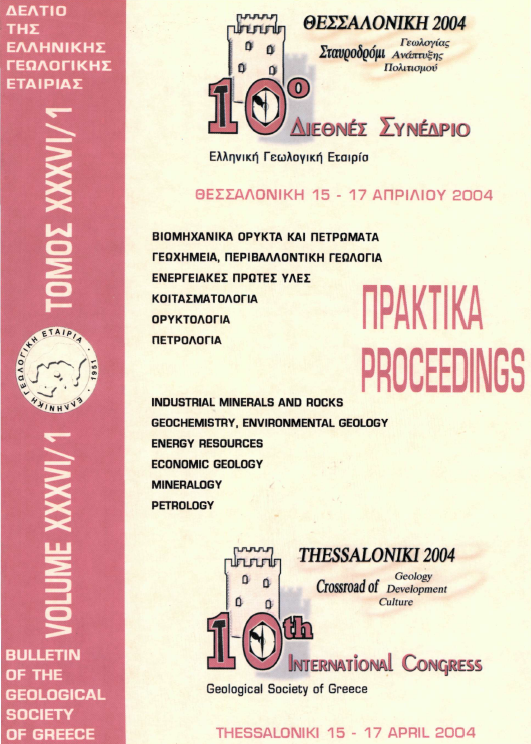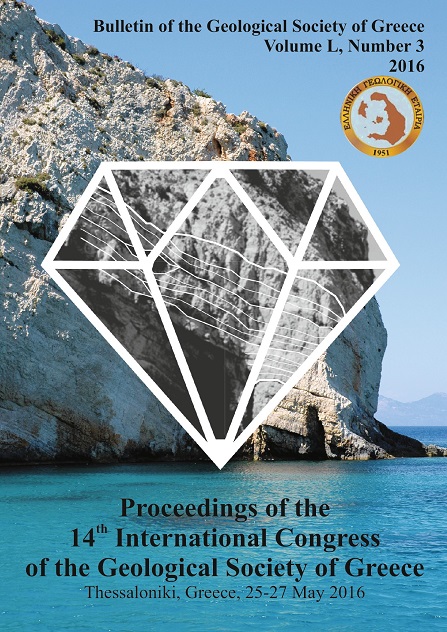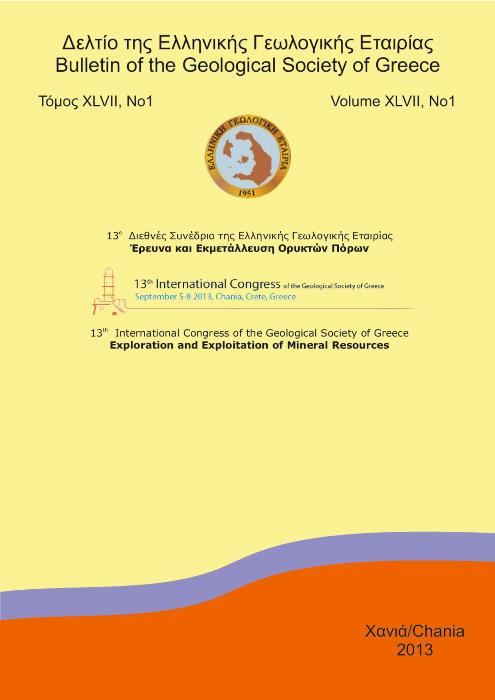INFLUENCE OF ORGANIC MATTER AND IRON OXIDES ON THE COLOUR PROPERTIES OF A MICRITIC LIMESTONE FROM KEFALONIA
Περίληψη
The influence of organic matter and iron oxides on the colour properties of an ultra-high purity micritic limestone from Kefalonia Island containing 99.7% calcite was studied. Colouring impurities, organic matter and iron-oxide, were added in the form of a xylitic lignite and a hematite-rich Fe-ore respectively. Both impurities decrease lightness (L*) and increase deviation from perfect white diffuser (AE*ab) as well as redness and yellowness of calcite. Organic matter affects colour properties to a greater degree than iron oxides. The results obtained were used in a model, which predicts lightness and AE*ab of white limestones and marbles from their Fe2Ü3 and organic carbon content. The theoretical values of L* and AE*ab of a series of known limestones and calcific marbles obtained from this model are comparable to experimental values determined using a colourimeter. Slight deviations between theoretical and experimental values are attributed to several factors, which include the different nature of iron oxides/oxyhydroxides (goethite or/and lepidocrocite and/or amorphous Fe-oxyhydroxides instead of hematite) and organic matter (kerogene instead of xylitic lignite) present in the carbonate rocks, the different particle size of calcite and impurities in the different carbonates, to the multiphase nature of the colouring impurities used in this study and to the possible existence of other Fe-rich phases such as Fe-carbonates in the limestones. The proposed model can facilitate quality control of limestone resources used as fillers and can be extended to dolomitic rocks.
Λεπτομέρειες άρθρου
- Πώς να δημιουργήσετε Αναφορές
-
Christidis, G. E., Sakellariou, N., Repouskou, E., & Markopoulos, T. (2004). INFLUENCE OF ORGANIC MATTER AND IRON OXIDES ON THE COLOUR PROPERTIES OF A MICRITIC LIMESTONE FROM KEFALONIA. Δελτίο της Ελληνικής Γεωλογικής Εταιρείας, 36(1), 72–79. https://doi.org/10.12681/bgsg.16573
- Ενότητα
- Βιομηχανικά Ορυκτά και Πετρώματα

Αυτή η εργασία είναι αδειοδοτημένη υπό το CC Αναφορά Δημιουργού – Μη Εμπορική Χρήση 4.0.
Οι συγγραφείς θα πρέπει να είναι σύμφωνοι με τα παρακάτω: Οι συγγραφείς των άρθρων που δημοσιεύονται στο περιοδικό διατηρούν τα δικαιώματα πνευματικής ιδιοκτησίας επί των άρθρων τους, δίνοντας στο περιοδικό το δικαίωμα της πρώτης δημοσίευσης. Άρθρα που δημοσιεύονται στο περιοδικό διατίθενται με άδεια Creative Commons 4.0 Non Commercial και σύμφωνα με την οποία μπορούν να χρησιμοποιούνται ελεύθερα, με αναφορά στο/στη συγγραφέα και στην πρώτη δημοσίευση για μη κερδοσκοπικούς σκοπούς. Οι συγγραφείς μπορούν να: Μοιραστούν — αντιγράψουν και αναδιανέμουν το υλικό με κάθε μέσο και τρόπο, Προσαρμόσουν — αναμείξουν, τροποποιήσουν και δημιουργήσουν πάνω στο υλικό.






